There is no Christmas without the Sorpotel. And both, the Goans and East Indians make a stellar version of the dish, distinctly different in form and taste. Sunday mid-day takes a ferry to the Catholic hamlet of Uttan to watch the age-old rivalry play out by the beach
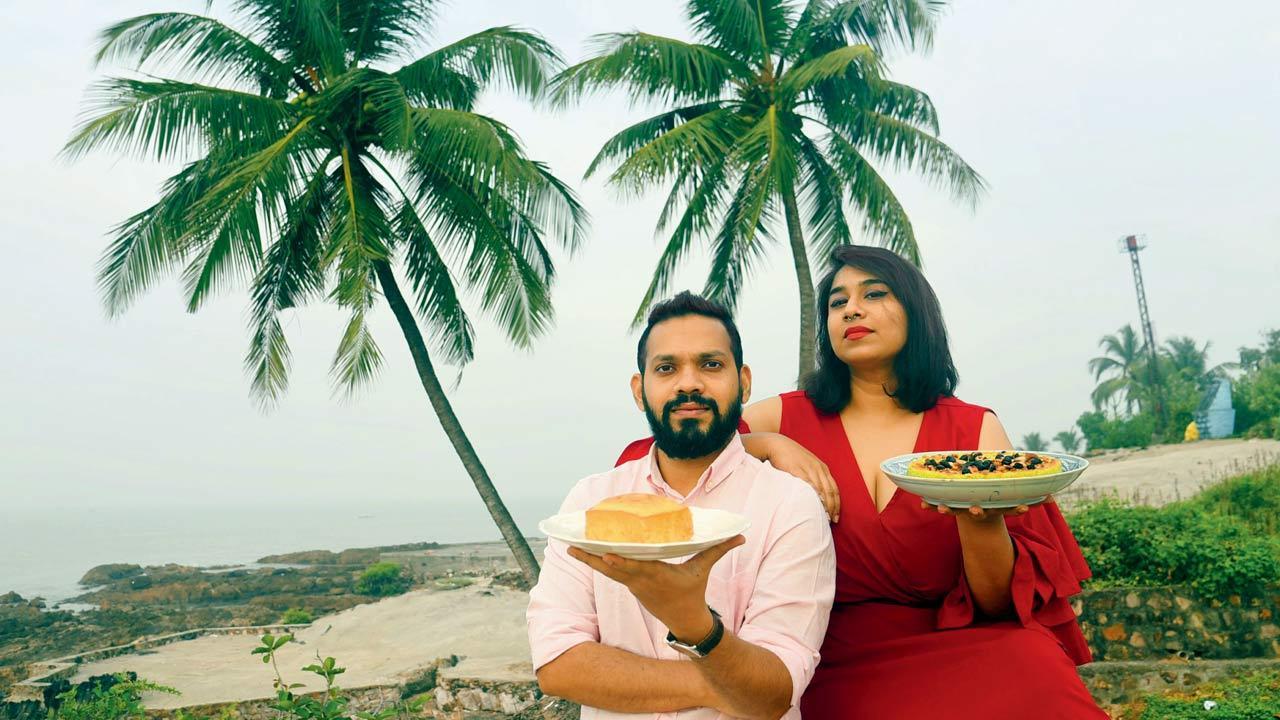
Goan home chef Aaron D’Souza and East Indian culinary queen Alefiya Jane pit their community specials, the Sorpotel and Christmas cakes—Baath and Umber—in a war of words and pride. Pic/Sameer Markande
At 6.45 am, Uttan, a sleepy coastal town in Thane district, is yet to see the morning sun. The smell of sea, salt and dried fish is punctuated by that of dough and freshly baked pao, sliced bread and khari wafting from bakeries that have already opened for the day. There is something very Christian about the naka, where our taxi stops. We can’t spot a church, but small crosses and idols dot the area—right next to a home, or at the mouth of a gully. The Our Lady of Vailankanni shrine is a few kilometres away—it was the crowd-puller here, at least before the pandemic. Goan home chef Aaron Albert D’Souza, who has travelled two hours from Mahim to be here, is already drawn to this place’s “susegaad” vibe, but he doesn’t admit it yet.
ADVERTISEMENT
He used to be the manager at Lower Parel lounge Lord of The Drinks before he launched his home brand The Goan Poie in September 2020, winning over Mumbai’s foodies with his Recheado, Vindaloo, Chicken Cafreal and Sorpotel, among other delectable treats from his very-Goan menu. He is here to meet the multi-hyphenate Alefiya Jane, an East Indian chef who runs She Bakes, Dirty Bakery and The Bottle Masala, and is also a cake sculptor, plus-size model and brand strategist. Alefiya Jane, who prefers to go by her first name, has spent the early part of the morning baking two trays of Umber, a cucumber cake, using an heirloom recipe, at her 350-year-old family cottage in Uttan Naka. As soon as she spots D’Souza at her gate, she pointedly asks, “Where’s your Baath?” He lifts his translucent bag to show her the silver-foiled package, only to be at the receiving end of the first jibe of the day. “Just this... That’s too tiny to match up to my Umber.” He rolls his eyes. He thinks his Baath, the traditional Goan cake made of semolina and coconut, is definitely more delicious. “Don’t decide till you’ve eaten the Umber,” he overhears, as she leads us to her kitchen. This is not the first time that the duo is engaging in food banter. Barely seven hours earlier, over a Zoom call with this writer, it was Sorpotel, a dish that the Portuguese introduced to the two communities, which was their point of contention.
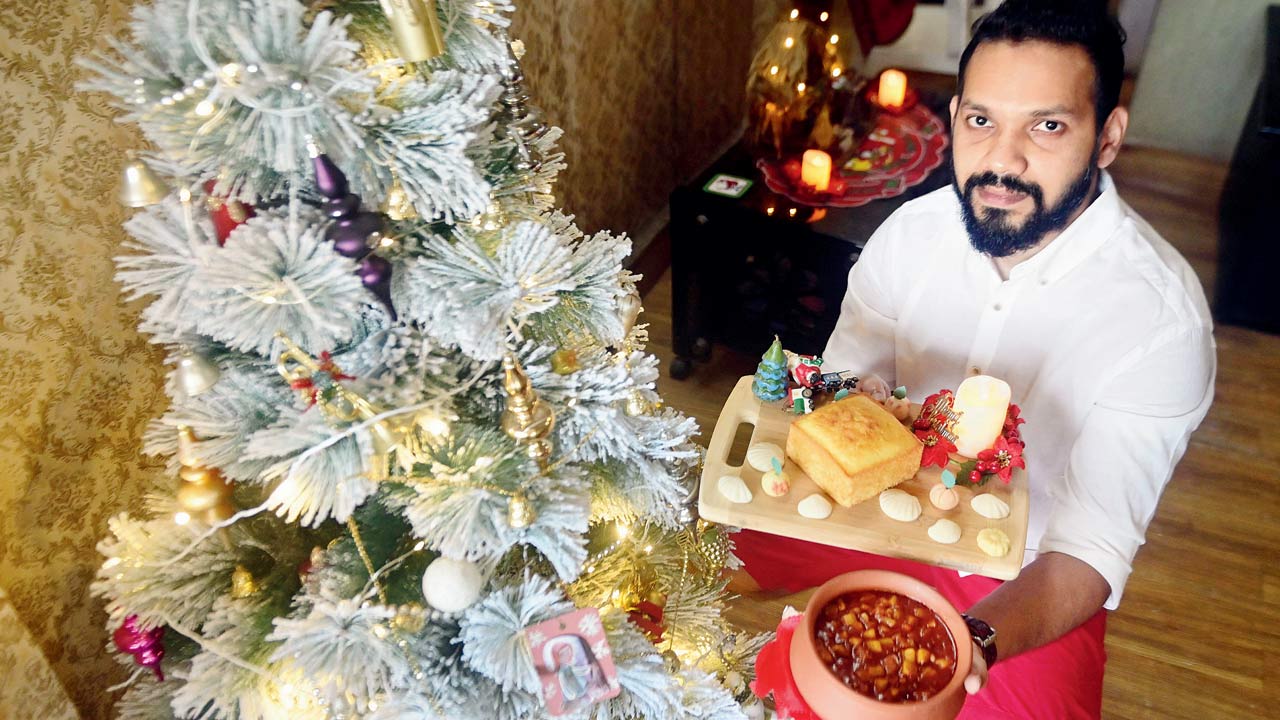
Goan home chef Aaron D’Souza says that the two important ingredients that make the Goan Sorpotel stand out are the feni and toddy vinegar. The Baath is made using semolina, eggs and coconut. Pics/Bipin Kokate
“The word ‘sorpotel’ basically means ‘confusion’. The reason they call it that is because it’s a mish-mash of a lot of ingredients. Every part of the pig is used to make it, including the ears, snout, tail and intestine,” D’Souza shares, adding, “But, if there’s one thing there’s no confusion about, it’s that Goans make the best Sorpotel.” He immediately receives a rebuke. “Yes, we know Sorpotel is all about confusion, but this confusion is mostly in the head of the Goans. I mean Sorpotel is meant to be a dry, side dish. I have no idea why the Goans make a gravy out of it? How will it then be different from your Vindaloo or Recheado?” D’Souza dismisses her argument with a laugh.
If anything, Alefiya Jane and D’Souza’s little food war is emblematic of a long, simmering battle of wits, culture and church politics between the East Indian and Goan Catholics of Bombay. Over a century of rift that dominated this two Catholic communities is now being distilled, or rather simplified, for us in an interview about who makes the better Sorpotel?
In their research paper titled, Goans and East Indians: A Negotiated Catholic Presence in Bombay’s Urban Space, authors Alice Santiago Faria, postdoctoral research fellow at the Centre for the Humanities, FCSH, Universidade NOVA de Lisboa and Sidh Losa Mendiratta, adjunct professor at the Universidade Lusófona do Porto, explored the reasons for the rivalry between these two Catholic communities.
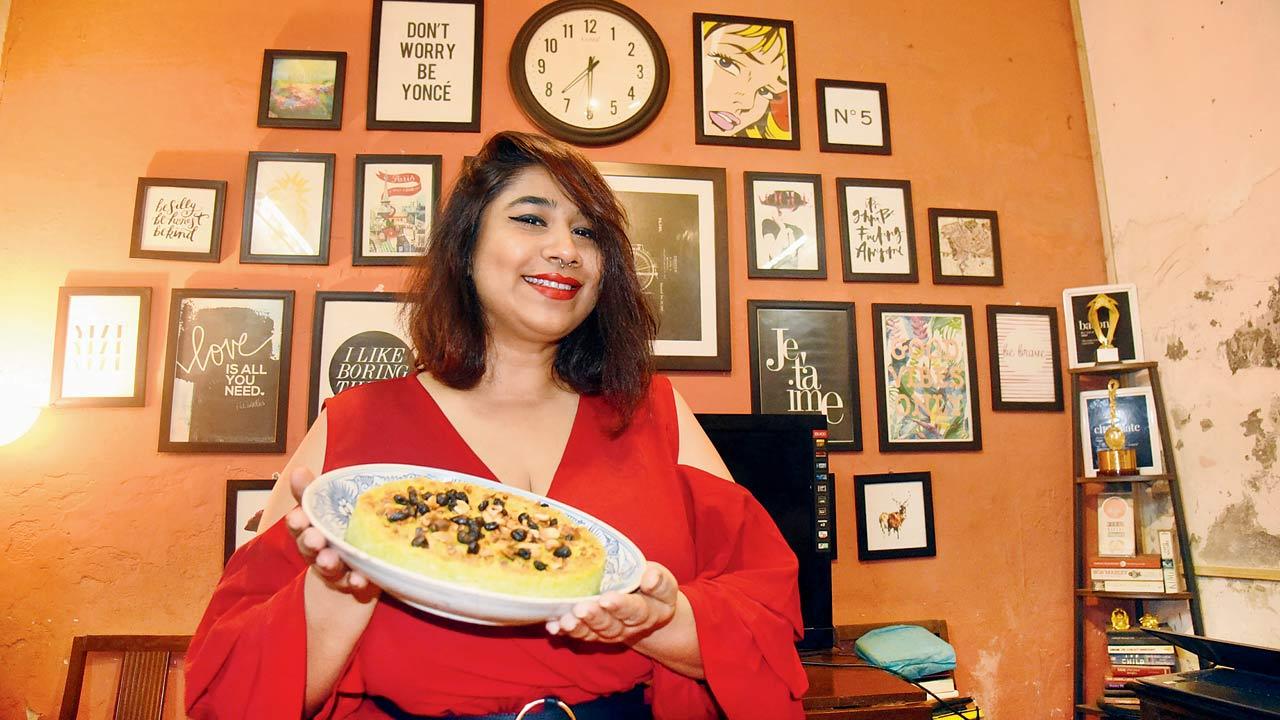 Uttan resident Alefiya Jane, a brand strategist and East Indian chef who runs She Bakes, Dirty Bakery and The Bottle Masala, holds the Umber, a farmer’s cake, which was used as a welcome dish during Christmas. It’s made using cucumber, sugar, fresh coconut, and semolina. Pics/Sameer Markande
Uttan resident Alefiya Jane, a brand strategist and East Indian chef who runs She Bakes, Dirty Bakery and The Bottle Masala, holds the Umber, a farmer’s cake, which was used as a welcome dish during Christmas. It’s made using cucumber, sugar, fresh coconut, and semolina. Pics/Sameer Markande
When the Portuguese missionaries arrived in Bombay in the 1500s, they converted much of the local population to Christianity. “The resulting Catholic society was divided into four main groups: the European-born—or “white”—Portuguese, known as the “reinóis”; the people of Portuguese descent born in Asia, known as “descendentes” or “casados”; the Indian or converted community, known to the Portuguese as “naturais”; and the slave population, overwhelmingly of African descent,” the authors wrote. These social divides were present when the Bombay archipelago was ceded to the British in 1665.
Meanwhile, the Archdiocese in Goa—part of the Portuguese Real Padroado or Royal Patronage structure—continued to retain control over the four parish churches and the Catholic population of Bombay, even though they were viewed with suspicion by the British, because of the influence they wielded on the local Catholic population. “In 1720, the British authorities expelled all the missionaries belonging to the Padroado structure from Bombay, handing over the Catholic religious jurisdiction of the archipelago to the Carmelite missionaries, who were dependant on the Propaganda Fide structure based in Rome,” write the authors.
By the 1830s, a new phenomenon began, with the steady inflow of Goan Portuguese citizens—mainly Catholics—to the city. They faced numerous challenges, including housing. A majority of migrants also came from “an essentially rural background rooted in the patterns of village life”. But, the rivalry between these communities only came to the fore, during the last quarter of the 19th century.
“Many factors contributed to this animosity, including the crucial fact that both communities often vied for the same jobs within Bombay colonial society, in particular positions within the lower ranks of the city’s Civil Service. Another dividing factor was the ongoing conflict between the Padroado and Propaganda jurisdictions,” wrote Faria and Mendiratta.
The local Bombay Catholics progressively developed a “sons-of-the-soil” discourse, “affirming their loyalty to the British administration”. The “restructuring of collective identity occurred in 1887, when members of the community began to call themselves ‘East Indians’”. The authors, of course, go on to discuss the “constructive side” of the rivalry, with both communities embarking on “building and renovation activities”.
Alefiya Jane and D’Souza are aware of this complex history, but admittedly believe that it has little consequence now. Inter-marriages between the two communities over the last many decades means every Goan has an East Indian relative, and vice versa. “But East Indian food wins hands down, boss,” says Alefiya Jane. We are back to discussing Sorpotel, the staple dish that both communities prepare for Christmas.
In D’Souza’s home, the sorpotel was cooked at least a week ahead of Christmas—“Sorpotel is like fine wine. It gets better with age.” Every member of his extended family would get together to do the chopping and grinding of masalas. As a 10-year-old, D’Souza remembers being part of the shenanigans. “I would be given a small slab of pork meat, and asked to dice it into small pieces,” he remembers. He feels that Goan Sorpotel stands out, because of the use of toddy vinegar, which “adds the flavour to the dish”. His maternal grandmother Anastasia Agnes Ferro also used the blood of the pig. “The blood and liver [of the pig] were the most exotic ingredients of the dish. Back in the day, as soon as they procured blood they’d place it in a metallic container and add toddy vinegar to it. This would prevent the blood from coagulating.” Agnes also used the Goa feni, either cashew or coconut, which would give her Sorpotel a distinct taste. The Goan Sorpotel, which is a spicy-tangy red gravy, is best enjoyed with rice or sannas, a steamed rice cake, the Goan-Mangalorean version of idlis.
The East Indian Sorpotel, on the other hand, is a brown, semi-dry appetiser dish, enjoyed with the Fugias, the tiny, round balloon bread or or rotis (white handbread). Toddy vinegar is still the important ingredient here—Alefiya Jane reminds D’Souza that the Goans don’t have a copyright on it, but it’s the use of bottle masala, a signature East Indian spice mix, that adds a different flavour to it. “The Sorpotel was usually made for feasts, Christmas and weddings. Back in the day, we didn’t really have catering as a concept. Families and neighbours got together to prepare for this feast, almost a month before. After all the pork meat went into making the roast or the Vindaloo, the remaining organs would be used to make the Sorpotel,” says Alefiya Jane. The East Indian Sorpotel gets its brown colour from the blood of the pig. “But, I think, my grandmother’s generation did away with using blood in their preparation,” she adds.
Since the Portuguese had a strong influence on both communities, there is a shared culinary history that cannot be ignored—the Sorpotel, says Alefiya Jane, is a byproduct of that. Even their Christmas platters, which the Goans call kuswar, have a few common sweets—Marzipan, Milk cream, Date Rolls, Kulkuls and Karanji (called Neureos in Goa). There are, of course, stark differences as well. Where the Goans make Baath, East Indians prepare Umber. “It’s actually called a farmer’s cake. There was a time, when East Indians owned a lot of land, and they’d grow everything from paddy to pumpkin, bottle gourd, cucumber and any other produce that you’d find on the coast. In those days, the only sweet dish that a farmer could put together was made using cucumber. It’s a very basic cake that doesn’t use eggs to bind it together. We just use sugar, fresh coconut, and semolina. There are no wet ingredients. The moisture in the cake comes from the cucumber juice. It’s light and mostly works like a palate cleanser. It is like a welcome cake that we serve when visitors come home for Christmas.”
Alefiya Jane is, however, partial to the Goan Pinagr and Baath. She admits that nobody makes that cake better. D’Souza, on the other hand, is a fan of the East Indian Fugias. “The funny thing is that I enjoy it with my Goan sorpotel; it goes very well with the heat and tang of the dish. The delicate sweetness of Fugias balances the flavours. I think these two dishes actually bring both the communities together,” he says.
We think, at this point, that the debate has settled, even though there’s no conclusion in sight. But when D’Souza returns home to Mumbai, a surprise is waiting for him at his Mahim home. A Baath cake made by an East Indian friend. He makes it a point to share it with us. “Out of all the days, I had to receive this today.” Alefiya Jane’s rejoinder is awaited.
East Indian Sorpotel

Ingredients
1 kg pork cut into big pieces, apply salt and fry till brown
1/4 kg liver cut into pieces, apply salt and fry till brown
2 pods garlic, cut lengthwise
2 inch ginger, cut lengthwise
5 green chillies, cut lengthwise
2 tbsp bottle masala
Toddy vinegar or red wine vinegar
Method
Cut the cooked pork and liver into fine pieces and set aside. In a large deep, thick bottomed vessel, add 2 tbsp of oil and fry the cut masala till fragrant. Add the bottle masala and fry till fragrant—add the meat and sauté. Add toddy vinegar to taste for cooking, and let simmer on slow fire over a chula preferably till the Sorpotel comes together. Serve hot with Fugias and handbreads.
Courtesy: @alefiyajane_shebakes, Instagram
East Indian Umber
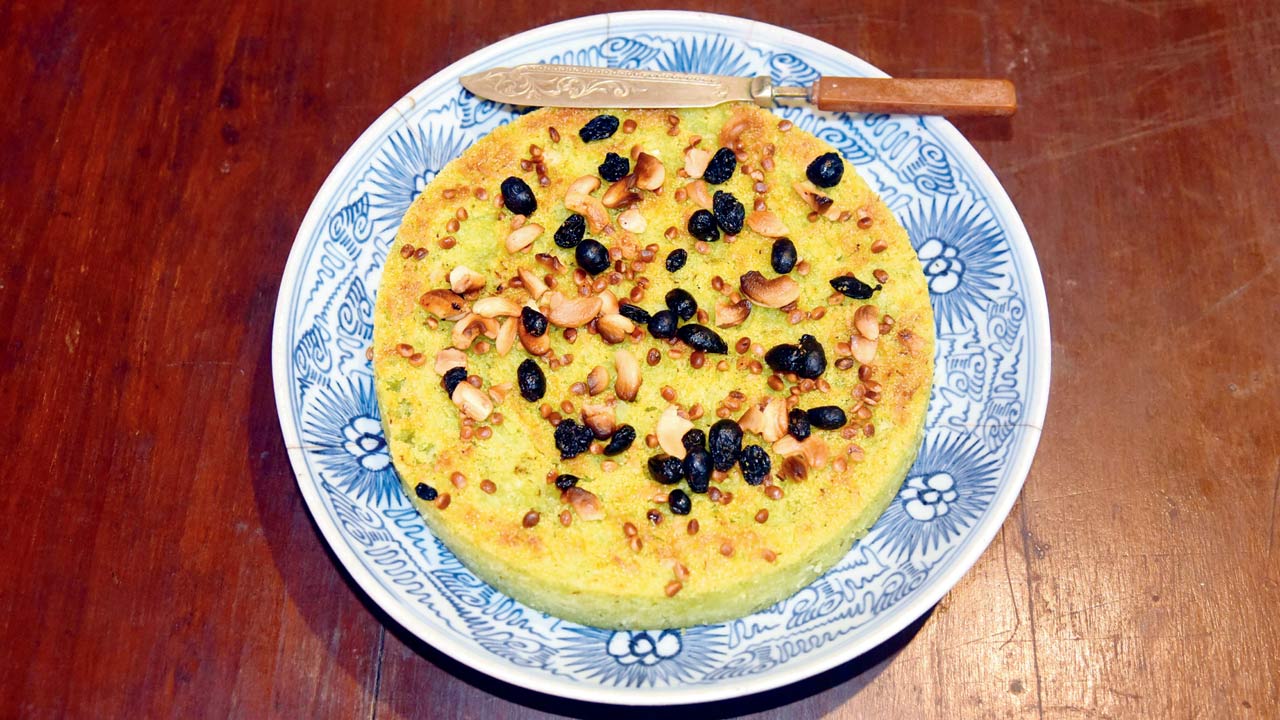
Ingredients
1 large cucumber (killi, long green cucumber) grated
250 gm semolina
200-250 gm sugar/jaggery
1 small fresh coconut grated
6-7 cardamoms crushed
100 gm ghee
Method
Mix all the ingredients and let it sit for 2 hours. Bake till done. Serve warm or after a Christmas dinner.
Goan Sorpotel
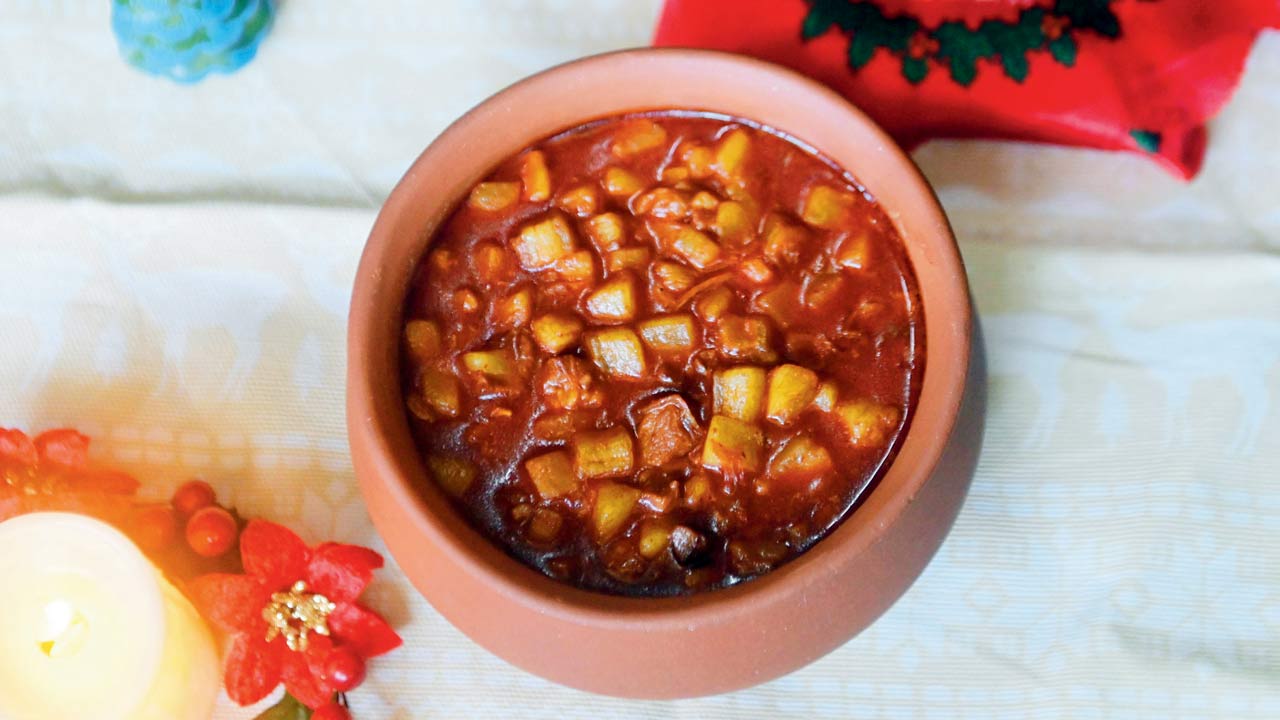
Ingredients
1½ kg pork
200 gm liver
4-5 cloves
1 stick cinnamon
4-5 peppercorns
4 bay leaves
3 large onions
15-20 garlic flakes
1 inch ginger
3 green chillies
For the paste
In a stone grinder, add the following:
20 Kashmiri chillis
1 tsp peppercorns
1 tsp mustard
1/2 tsp cumin
1/2 tsp turmeric
3 inch cinnamon sticks
10 cloves
Toddy vinegar
Grind till it forms a paste
Method:
Boil the pork and liver with cloves, cinnamon, peppercorns and bay leaves till done. Save the stick for later. Cut the pork and liver into small fine bits and fry in its own fat with a hint of coconut oil. Finely slice onions, ginger, garlic flakes and chillies. First sauté the onions till brown, then add the ginger, garlic and chillies, fry well till light brown. Add the ground masala paste and sauté for a couple of minutes, add more toddy vinegar if required and a hint of ‘Goa’ jaggery. Add the fried meat pieces till coated with the masala, then add the remaining stock saved from the boiled pork. Lastly, a little salt to taste. Cook till it’s ready.
Courtesy: @thegoanpoie, Instagram
Goan Baath
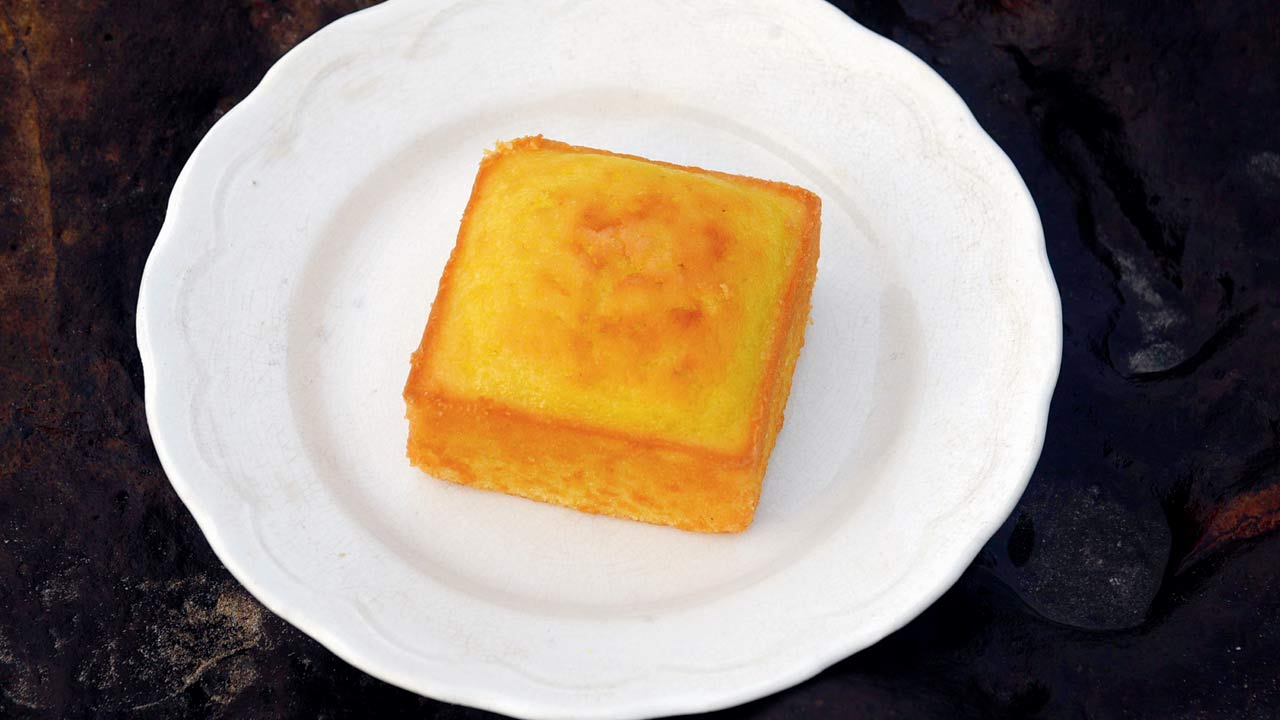
Ingredients
250g semolina
1 coconut
3 eggs
200gm sugar
4 tbsp butter
1/4 tsp salt
1/4 tsp baking powder
Rose water to taste
Method
Scrape a fresh coconut, avoiding the brown husk, and grind it with rose water to form a fine paste. Beat eggs, sugar and butter till fluffy. Lightly roast the semolina and add to the egg mixture. Fold in the coconut paste and add salt and baking powder. Set aside and let it rest overnight to rise. If the dough is a little stiff, add a little coconut milk to soften. Grease the baking tray and pour in the mixture, bake for 15 minutes or more till done in a pre heated oven at 180 degree Celsius.
 Subscribe today by clicking the link and stay updated with the latest news!" Click here!
Subscribe today by clicking the link and stay updated with the latest news!" Click here!












